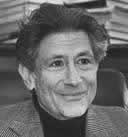Islam Denounces Terrorism

God calls to the Abode of Peace and He guides whom He wills to a straight path.
(Qur'an, 10:25)
|
Islam Has Brought Peace and Harmony to the Middle East History always witnessed peace, justice and tolerance in the lands ruled by Muslim administrators when they followed Qur'anic guidance. The practices in the lands conquered during the lifetime of the Prophet Muhammad are very important examples, and just administrators succeeding him, who followed in the footsteps of God's messengers and never swerved from the morality of the Qur'an established peaceable societies. The true justice, righteousness and honesty described in the Qur'an persisted in the time of these administrators, thereby providing a role model for the succeeding generations to follow. The land of Palestine and its capital Jerusalem, where members of the three divine religions reside together, are important in the sense that they show how Muslims bring peace and stability to the lands they rule. Indeed, for most of the last 1400 years, Muslim rule has brought peace to Jerusalem and Palestine.
The Peace and Justice Brought to Palestine by the Caliph Umar Jerusalem was the capital of the Jews until A.D. 71. In that year, the Roman Army made a major assault on the Jews, and exiled them from the area with great savagery. As the time of the Jewish diaspora began, Jerusalem and the surrounding area was becoming an abandoned land. However, Jerusalem once again became a centre of interest with the acceptance of Christianity during the time of the Roman Emperor Constantine. Roman Christians built churches in Jerusalem. The prohibitions on Jews settling in the region were lifted. Palestine remained Roman (Byzantine) territory up until the 7th century. The Persians conquered the region for a short time, but the Byzantines later reconquered it. An important turning point in the history of Palestine came in the year 637, when it was conquered by the armies of Islam. This meant new peace and harmony in Palestine, which had for centuries been the scene of wars, exile, looting and massacre, and which saw new brutality every time it changed hands, a frequent occurrence. The coming of Islam was the beginning of an age when people of different beliefs could live in peace and harmony.
Palestine was captured by Umar, the second Caliph after the Prophet himself. The entry of the Caliph into Jerusalem, the tolerance, maturity and kindness he showed towards people of different beliefs, introduced the beautiful age that was beginning. The British historian and Middle East expert Karen Armstrong describes the capture of Jerusalem by Umar in these terms in her book Holy War: The Caliph Omar entered Jerusalem mounted on a white camel, escorted by the magistrate of the city, the Greek Patriarch Sophronius. The Caliph asked to be taken immediately to the Temple Mount and there he knelt in prayer on the spot where his friend Mohammed had made his Night Journey. The Patriarch watched in horror: this, he thought, must be the Abomination of Desolation that the Prophet Daniel had foretold would enter the Temple; this must be Antichrist who would herald the Last Days. Next Omar asked to see the Christian shrines and, while he was in the Church of the Holy Sepulchre, the time for Muslim prayer came round. Courteously the Patriarch invited him to pray where he was, but Omar as courteously refused. If he knelt to pray in the church, he explained, the Muslims would want to commemorate the event by erecting a mosque there, and that would mean that they would have to demolish the Holy Sepulchre. Instead Omar went to pray at a little distance from the church, and, sure enough, directly opposite the Holy Sepulchre there is still a small mosque dedicated to the Caliph Omar. The other great mosque of Omar was erected on the Temple Mount to mark the Muslim conquest, together with the mosque al-Aqsa which commemorates Mohammed's Night Journey. For years, the Christians had used to the site of the ruined Jewish Temple as the city rubbish dump. The Caliph helped his Muslims to clear the garbage with his own hands and there Muslims raised their two shrines to establish Islam in the third most holy city in the Islamic world.21
With the Muslim conquest of Jerusalem, the city became a safe haven in which all three religions could co-exist in peace. John L. Esposito writes: When the Arab armies took Jerusalem in 638, they occupied a center whose shrines had made it a major pilgrimage site in Christendom. Churches and the Christian population were left unmolested. Jews, long banned from living there by Christian rulers, were permitted to return, live, and worship in the city of Solomon and David.22 When Caliph Umar entered Jerusalem, he signed the below agreement with the Patriarch of Jerusalem: This is the security which ‘Umar, the servant of God, the commander of the faithful, grants to the people of Ælia. He grants to all, whether sick or sound, security for their lives, their possessions, their churches and their crosses, and for all that concerns their religion. Their churches shall not be changed into dwelling places, nor destroyed, neither shall they nor their appurtenances be in any way diminished, nor the crosses of the inhabitants nor aught of their possessions, nor shall any constraint be put upon them in the matter of their faith, nor shall any one of them be harmed.23
In short, Muslims brought civilisation to Jerusalem and all of Palestine. Instead of beliefs that showed no respect for other peoples' sacred values, and which killed them simply out of differences of faith, there reigned the just, tolerant and moderate culture of Islam. After its capture by Umar, Muslims, Christians and Jews lived together in peace and harmony in Palestine. Muslims never tried to use force to make people convert, although some non-Muslims who saw that Islam was the true religion did so of their own free will. The peace and harmony in Palestine lasted as long as Muslim rule in the region. However, at the end of the 11th century, a conquering force entered the region from abroad, and the civilised land of Jerusalem was barbarically and savagely plundered, in a way never before seen. These barbarians were the Crusaders.
The Savagery of the Crusaders While members of all three religions were living peaceably together in Palestine, the Christians in Europe decided to organise a crusade. Following a call by Pope Urban II on 27 November 1095 at the Council of Clermont, more than 100,000 people from all over Europe set out for Palestine to free the Holy land from the Muslims and find the fabled wealth of the East. After a long and wearying journey, and much plundering and slaughter along the way, they reached Jerusalem in 1099. The city fell after a siege of nearly five weeks, and the Crusaders moved in. And they carried out a savagery the like of which the world has seldom seen. All Muslims and Jews in the city were put to the sword. The peace and harmony in Palestine, which had lasted since Umar, ended in terrible slaughter. The Crusaders violated all the ethical laws of Christianity, a religion of love and compassion, and spread terror in the name of Christianity. The Justice of Saladin The barbaric Crusader army made Jerusalem their capital, and established a Latin Kingdom whose borders stretched from Palestine to Antioch. However, the Crusaders who brought savagery to Palestine did not last long. Saladin gathered all the Muslim kingdoms under his banner in a holy war, and defeated the Crusaders at the battle of Hattin in 1187. After the battle, the two leaders of the crusader army, Reynald of Chatillon and King Guy, were brought into Saladin's presence. Saladin executed Reynald of Chatillon, who had become infamous for the terrible savagery he had committed against Muslims, but he let King Guy go, as he had not committed the same crimes. Palestine once again saw the true meaning of justice. Immediately after Hattin, and on the very same day that the Prophet Muhammad had been taken from Mecca to Jerusalem in one night, the day of the Ascent, Saladin entered Jerusalem and freed it from 88 years of Crusader occupation. When the Crusaders took the city 88 years earlier, they killed all the Muslims inside it, and for that reason they were afraid that Saladin would do the same thing to them. However, he did not touch even one Christian in the city. Furthermore, he merely ordered the Latin (Catholic) Christians to leave it. The Orthodox Christians, who were not Crusaders, were allowed to live in the city and worship as they chose. In the words of John L. Esposito, "The Muslim army was as magnanimous in victory as it had been tenacious in battle. Civilians were spared; churches and shrines were generally left untouched... Saladin was faithful to his word and compassionate toward noncombatants." 24
Karen Armstrong describes the second capture of Jerusalem in these words: On 2 October 1187 Saladin and his army entered Jerusalem as conquerors and for the next 800 years Jerusalem would remain a Muslim city. Saladin kept his word, and conquered the city according to the highest Islamic ideals. He did not take revenge for the 1099 massacre, as the Qur'an advised (16:127), and now that hostilities had ceased he ended the killing (2:193-194). Not a single Christian was killed and there was no plunder. The ransoms were deliberately very low... Saladin was moved to tears by the plight of families who were rent asunder and he released many of them freely, as the Qur'an urged, though to the despair of his long-suffering treasurers. His brother al-Adil was so distressed by the plight of the prisoners that he asked Saladin for a thousand of them for his own use and then released them on the spot... All the Muslim leaders were scandalised to see the rich Christians escaping with their wealth, which could have been used to ransom all the prisoners… [The Patriarch] Heraclius paid his ten-dinar ransom like everybody else and was even provided with a special escort to keep his treasure safe during the journey to Tyre.25 In short, Saladin and the Muslims in his command treated the Christians with great mercy and justice, and even showed them more compassion than their own leaders had. Not only the Christians but also Jews attained peace and security with the conquest of Jerusalem by Muslims. The well-known Spanish-Jewish poet Yehuda al-Harizi expressed his feelings thus in one of his works: God …decided that the sanctuary would no longer rest in the hands of the sons of Esau... Thus in the year 4950 of Creation [AD 1190] God aroused the spirit of the prince of the Ishmaelites [Salah al-Din], a prudent and courageous man, who came with his entire army, besieged Jerusalem, took it and had it proclaimed throughout the country that he would receive and accept the race of Ephraim, wherever they came from. And so we came from all corners of the world to take up residence here. We now live in the shadow of peace.26 After Jerusalem, the Crusaders continued their barbarity and the Muslims their justice in other cities in Palestine. In 1194, Richard the Lionheart, who is portrayed as a great hero in British history, had 3,000 Muslims, among whom were many women and children, basely executed in Castle Acre. Although the Muslims witnessed this savagery, they never resorted to the same methods. They abided by God's command "Let not the hatred of a people [who once] obstructed you from the Sacred Mosque lead you to transgress..." (Qur'an, 5:2) and never used violence against innocent civilians. They never employed unnecessary violence, not even against the Crusader armies they defeated. The savagery of the Crusaders and the justice of the Muslims once more revealed a historic truth: An administration built on the principles of Islam allowed people of different faiths to live together. This fact continued to be demonstrated for 700 years after Saladin, particularly during the Ottoman period.
The Ottoman Empire's Just and Tolerant Rule In 1514, Sultan Selim captured Jerusalem and the surrounding area, and some 400 years of Ottoman rule in Palestine began. As in other Ottoman states, this period would enable Palestine to enjoy peace, stability, and the living together of different faiths. The Ottoman Empire was administered under what is known as the "nation (millet) system", the fundamental feature of which was that people of different faiths were allowed to live according to their own beliefs and even legal systems. Christians and Jews, described as the People of the Book in the Qur'an, found tolerance, security and freedom in Ottoman lands.
The most important reason for this was that although the Ottoman Empire was an Islamic state administered by Muslims, it had no desire to force its citizens to adopt Islam. On the contrary, the Ottoman state aimed at providing peace and security for non-Muslims, and governing them in such a way that they would be pleased with Islamic rule and justice.
Other major states at the same time had much cruder, oppressive and intolerant views of government. The Kingdom of Spain could not tolerate the existence of Muslims and Jews on the Spanish peninsula and inflicted great violence on both communities. In many other European countries, Jews were oppressed just for being Jews (for instance they were imprisoned in ghettoes), and were sometimes the victims of mass slaughter (pogroms). Christians could not even get on with one another: the fighting between Protestants and Catholics in the 16th and 17th centuries turned Europe into a bloodbath. The 30-Years War between 1618 and 1648 was one result of this Catholic-Protestant conflict. As a result of that war, central Europe became a battleground, and in Germany alone, one-third of the population of 15 million people was killed.
In such an environment, it is an indisputably important truth that Ottoman rule was exceedingly humane.
Many historians and political scientists have drawn attention to this fact. One of these is Columbia University's world-famous Middle East expert Professor Edward Said. Originally from a Jerusalem Christian family, he continues his research far from his homeland in American universities. In an interview in the Israeli newspaper Ha'aretz he recommended the "Ottoman nation system" if a permanent peace is to be built in the Middle East. What he said was: A Jewish minority can survive the way other minorities in the Arab world survived. …it worked rather well under the Ottoman Empire, with its millet system. What they had then seems a lot more humane than what we have now.27 History reveals that Islam is the only system of belief to offer a just, tolerant and compassionate way of government in the Middle East. The Pax Ottomana, which came to an end with the withdrawal of the Ottoman Empire from the region, has still not been replaced. For this reason, the way to attain peace in the Middle East is to introduce the Ottoman model characterised by tolerance and compromise, the two fundamental teachings of the Qur'an. Islam, truly followed, is the solution to all sorts of violence of all kinds, conflicts, wars and terror and a guarantor of peace, justice and tolerance.
|
21. Karen Armstrong, Holy War, p. 30-31,
22. John L. Esposito, Islam: The Straight Path, p. 58
23. Prof. Thomas Arnold, The Spread of Islam in the World, A History of Peaceful Preaching, p. 56
24. John L. Esposito, Islam: The Straight Path, p. 59
25. Karen Armstrong, Holy War, p. 185
26. Yusuf Besalel, Yahudi Ansiklopedisi (Jewish Encyclopedia), Volume 1, Gözlem Gazetecilik Basýn ve Yayýn AÞ, 2001, p. 246
27. An Interview with Edward Said by the Israeli Newspaper Haaretz, Friday, August 18, 2000





